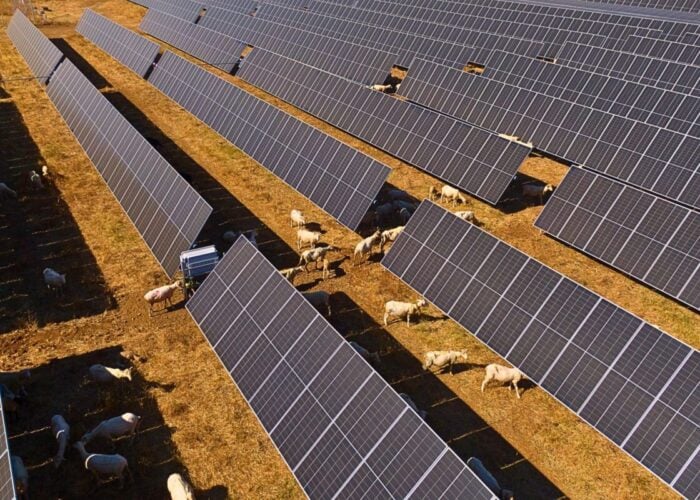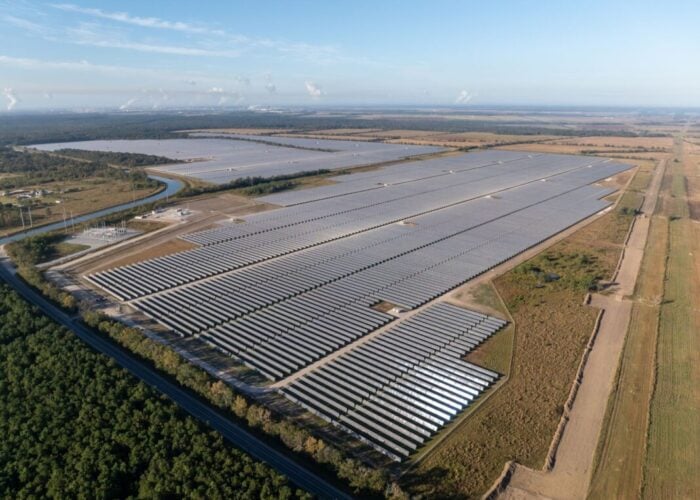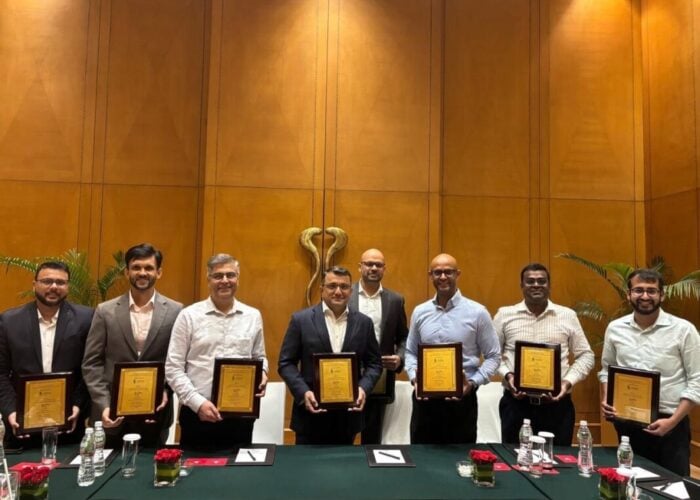
With subsidies now a distant memory in most markets, solar is increasingly finding itself deployed via government tenders and corporate PPAs. But what are the prospects for those to mature, and to what extent will merchant revenue models emerge this decade? Jules Scully reports.
With opportunities for merchant projects in a post-subsidy era and corporations turning to solar to decarbonise their operations, routes to market are becoming more diversified, but challenges in the form of financing and price cannibalisation need to be navigated for the sector to reach its full potential.
Unlock unlimited access for 12 whole months of distinctive global analysis
Photovoltaics International is now included.
- Regular insight and analysis of the industry’s biggest developments
- In-depth interviews with the industry’s leading figures
- Unlimited digital access to the PV Tech Power journal catalogue
- Unlimited digital access to the Photovoltaics International journal catalogue
- Access to more than 1,000 technical papers
- Discounts on Solar Media’s portfolio of events, in-person and virtual
Accelerated solar deployment over the next decade will coincide with more cost reductions thanks in part to the growth and development of trackers as well as bifacial and larger modules, according to Wood Mackenzie, which expects technologies such as drones and thermal imaging to make project operations more efficient.
With solar’s costs continuing to decline over the next ten years at a faster pace than other technologies, the asset class will become “the clear lowest-cost technology in nearly all markets with favourable irradiance profiles”, the market research firm said earlier this year.
The International Energy Agency revealed in a recent report that it expects the levelised cost of electricity (LCOE) for solar PV in the US to fall from US$50/MWh in 2020 to US$30/MWh in 2030. The US National Renewable Energy Laboratory, meanwhile, suggested that the LCOE of utility-scale PV in the country could plummet to as low as US$16.89/MWh by 2030.
While previously the pace of solar’s penetration of energy markets was constrained by subsidy levels, policy support or corporate buyers looking to decarbonise their businesses, Wood Mackenzie suggests that solar becoming the lowest source of generation means the limiting factors will be investor willingness to take on merchant risk, available transmission capacity and solar’s variable generation pattern.
“Solar cannibalisation is a problem that the energy system and the market will need to adapt to”
And as more solar connects to the grid and wholesale power prices fall, price cannibalisation could threaten the economic viability of some projects.
“It’s already something that we’re aware of, and we need to mitigate that price cannibalisation in our approach to development and contracting power contracts,” says Zosia Riesner, director of power markets for Europe at solar developer Lightsource bp. “Solar cannibalisation is a problem that the energy system and the market will need to adapt to. We can’t just ignore it; it won’t go away naturally.”
The issue is compounded by the rising levels of rooftop solar decreasing the need for utility-scale generation at some times of the day, leading to curtailment – which is already being seen in markets such as California and Australia. The California Independent System Operator (CAISO) region, the part of the grid that covers most of the state, curtailed 5% of its total utility-scale solar production last year, according to the US Energy Information Administration.
“It is expected that the captured prices of PV will present a decreasing tendency, in particular during peak hours,” says Andrea Panizzo, head of business development Europe at renewables developer Enel Green Power. “The order of magnitude of this phenomenon (cannibalisation) will depend on the additional PV capacity that will be installed during the coming years, and that will compete at the same time to produce energy and inject it into the system.”
To reduce solar cannibalisation and curtailment, Panizzo says it will be necessary to increase the deployment of battery energy storage systems (BESS), which can then sell the stored electricity when prices are higher.
A recent report from DNV stated that despite its higher costs, solar-plus-storage has an advantage over solar PV on capture price, and within a decade the quality assurance company forecasts that about a quarter of all PV installed globally will be installed alongside dedicated storage. By 2030, the capture price advantage of solar-plus-storage over regular solar PV plants will surpass the cost disadvantage on a globally averaged basis, the report said.
After breaking ground on its first solar-storage hybrid project in the US in 2020, Enel Green Power earlier this year acquired a multi-gigawatt portfolio of solar projects in the country, with some of the plants included in the deal to be colocated with BESS to capture additional value streams and add resiliency to the grid.
Giuseppe Cicerani, head of business development generation integrated storage at Enel Green Power, says hybrid solar-plus-storage plants are able to provide at the same time a decarbonised energy bulk, adequacy and flexibility, thus “being a complete and competitive solution for the energy transition”.
Cicerani says that the main obstacle for energy storage implementation in some countries is the lack of a regulatory framework that adequately recognises the value of services provided and allows its participation in all energy, capacity and ancillary services markets.
However, in markets where the regulation is already in place and where ancillary services/adequacy are sourced through competitive processes, the energy storage is value accretive and “is being deployed at impressive rates”, says Cicerani, adding: “In these markets, energy storage acts as a catalyst for further renewable growth, both at investor level and system level. At investor level, due to the higher profitability of hybrid renewables-plus-storage compared to a renewables-only plant; while at system level, due to the supply of dispatchable capacity and ancillary services.”
Financing and diversified revenue streams
With the solar sector set to benefit from further technology improvements and lower construction costs towards 2030, developers spoken to by PV Tech Power are largely optimistic for utility-scale solar project financing towards 2030.
Calling the solar power industry “highly investible” due to its growing ability to meet both economic and policy goals, a Wood Mackenzie report earlier this year said renewable procurement for solar has increasingly morphed from just a decarbonisation strategy into a cost-saving business practice, ushering in a new set of investors, including Big Oil.
Recent announcements from oil and gas companies include those by TotalEnergies, which is aiming to cover all the electricity consumption of its European industrial sites from solar power by 2025, while Repsol has increased its 2030 renewables target to 20GW, the bulk of which is expected to be solar PV.
BP, meanwhile, benefits from its 50% ownership of Lightsource bp, which earlier this year raised its solar deployment target to 25GW by 2025 after securing US$1.8 billion in funding provided by ten global financial institutions, including Wells Fargo, Santander and BNP.
“We’re not concerned around the availability of capital to finance the transition, and I think that was demonstrated through our recent fundraising,” says Riesner. However, with the developer increasing its scale and expanding globally, she says there needs to be a faster speed of transaction and efficiency of execution.
The ability of solar players to secure financing to support large-scale buildouts has also been demonstrated in the US by developer 8minute Solar Energy, which last year upsized a letter of credit facility to US$350 million to help the company accelerate the development of a pipeline that includes more than 18GW of solar capacity and 24GWh of energy storage in California, Texas and the southwestern US.
Tom Buttgenbach, CEO of 8minute, saysthat although financing markets in general “are very healthy and very interested in this asset class”, there is one exception: tax equity. This US policy allows an investor to receive a return based not only on cash flow from a solar project but also on federal and state income tax benefits.
“In our case, it’s become a challenge just because the tax equity markets right now are very limiting,” says Buttgenbach. “For example, I can’t finance a merchant power plant because the tax equity supply is so limited that they will only finance highly contracted power plants, and even for those it is questionable if there’s enough tax equity today.”
Despite potential financing stumbling blocks, developers can be expected to diversify their revenue streams, moving beyond support from renewables auctions to take advantage of solar’s competitiveness with wholesale market prices.
To enable returns and optimise projects, Riesner predicts there will be more hybridisation of revenue streams in the coming decade: “You might have some merchant exposure, some assets in auctions, some assets with PPAs, and that becomes more complicated. There needs to be a better understanding of those offtake solutions and the risks.”
Low solar PPA prices mean developers are able to benefit from rising demand for cheap solar from a wider range of corporations. With data centres and technology companies historically leading off-site renewables procurement, Wood Mackenzie research says industrial and retail offtakers have become more engaged in the marketplace, contributing to the trend of shorter PPA contracts.
An alternative that has been popular with corporations in the US is the virtual PPA, a contract that doesn’t require the physical delivery of energy but instead sees a generator sell its electricity in the spot market and then exchange the floating revenue it receives for fixed payments from a corporate offtaker.
Enel Green Power España recently signed a ten-year virtual PPA with healthcare company Johnson & Johnson for 270GWh/year of renewable power originated from 104MW of wind and solar projects currently under construction in Spain. The agreement provides the offtaker with a financial price hedging and the corresponding guarantees of origin linked with the energy production from the renewables plants.
Panizzo of Enel Green Power says the growth of PPAs will be significantly important for solar projects in the coming years to secure and hedge revenues, compared to merchant prices, which “are usually considered volatile and less attractive to be financed. On the other side, the number of companies interested in signing PPAs with renewable energy is increasing year by year, although in some countries the market regulation does not yet allow for the possibility to structure bilateral PPAs.”
Buttgenbach also highlights the flexibility of solar with storage, with plants used to stabilise the grid to create additional revenue streams from trading. “We can network our plants together and we can start integrating our technology with grid technology where if there’s an outage, we can react in milliseconds.”
He cites recent research from the US Department of Energy that says by 2035 solar has the potential to power 40% of the country’s electricity without raising electricity prices thanks to technological improvements and enhanced demand flexibility.
Buttgenbach says: “Doing this renewable transition isn’t just a transition to a clean energy world, which we need to do for climate change etcetera, but it’s also an economic transition to a much cheaper way to power our planet.”







